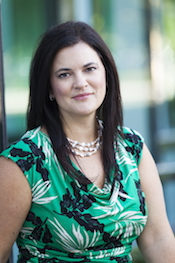Finding the Best Talent: 7 Tips for Evaluating Online Portfolios
Advice from the Executive Director of The Creative Group

A talented designer can bring a brand to life, win over a client, and delight users and customers. So as a hiring manager, creative director, art director, or agency lead, what should you keep in mind when you’re screening candidates and clicking through online design portfolios?
We went to Diane Domeyer, the executive director of The Creative Group (TCG), a specialized staffing service placing interactive, design, marketing, advertising and public relations professionals, to find out.
According to Diane, “63% of advertising and marketing executives surveyed by The Creative Group said a portfolio is the most influential factor when hiring a creative professional.” So it’s all the more important that you approach the process of browsing portfolios (like these) with the right mindset from the start.
Here are 7 things keep in mind when you’re evaluating online design portfolios:
1. Get the full story
What’s the biggest mistake that creative directors, art directors, and other folks make when they’re checking out an online design portfolio?
Diane says: A common mistake is to focus solely on the navigation and creative work included in a digital portfolio. Hiring managers should pay just as much attention to the story behind each piece. Look to see if candidates clearly identified the goals of each project, their role, and any positive outcomes. This will help you determine if they can make immediate contributions to your company’s bottom line.
2. Focused mind vs. open mind
Is it better to be thinking about the certain style you’ve already decided on, or to be open to what you find?
Diane says: This really depends on a company’s hiring needs. For example, if you’re looking for a graphic designer who can work within predetermined brand guidelines, finding candidates with a similar style should take precedence. On the other hand, if your company is interested in evolving its look and feel, being open-minded when reviewing online portfolios is more important.
3. Setting limits to prevent overload
Reality check: How many portfolios can someone reasonably evaluate in one sitting before they start to blur together?
Diane says: One way to avoid rushing the review process is to set aside a dedicated amount of time each day or week to peruse online portfolios. This approach can help you build a strong pipeline of potential talent versus feeling pressured to make a quick and desperate hire when an opening arises. While you may scan a high number of portfolios to identify potential candidates, I would recommend limiting thorough reviews to no more than 10 to 15 in one sitting.
4. Capturing notes and insights
What’s a good way to keep track of promising candidates as you sift through a variety of online design portfolios?
Diane says: An easy way to keep track of promising candidates is to copy and paste the URLs of their portfolios (or LinkedIn profiles) into a Word or Excel file or a Google Doc. Creating top- and mid-tier categories can also help you prioritize who to bring in for interviews. If multiple people will be involved in the hiring process, make sure they all have access to the information through internal collaboration tools or your company’s applicant tracking system. That way, you can easily share notes.
5. Prioritizing creative vision
In terms of “making a match,” what’s the most important factor that can be determined from reviewing a portfolio?
Diane says: Assessing a candidate’s skills and aesthetic style are essential for making a good match. Equally important is determining if a candidate is a trendsetter versus a trend follower. In fact, 69% of the advertising and marketing executives we surveyed said they value “overall creativity” most when evaluating a portfolio.
6. Soft skills matter
What is the most important “match” factor that can’t be determined from the online portfolio?
Diane says: Hiring managers must consider if the person will fit in well with the workplace culture. As a result, employers are placing increased emphasis on soft skills – like the ability to sell ideas, communicate clearly and collaborate effectively – when hiring talent for their teams. These are often gauged during in-person or video interviews.
7. Tracking down talent
How can organizations create a pool of the best potential candidates for a particular role or project?
Diane says: Unemployment rates remain low and the demand for creative skills continues to rise. As a result, recruiting and retaining top talent is a growing challenge for companies of all sizes. Working with a specialized staffing firm, like The Creative Group, can help streamline the screening process as they can review online portfolios and identify candidates hiring managers might not otherwise meet, including highly skilled individuals who may not be actively looking for a new opportunity.
 About Diane Domeyer
About Diane Domeyer
A 24-year veteran of the staffing industry, Diane Domeyer has been been named by the San Francisco Business Times as one of the Bay Area’s Most Influential Women for six consecutive years and “Forever Influential” in 2013. Her insights have appeared in the Wall Street Journal, the Associated Press, and other media outlets. When she’s not managing operations for TCG’s locations across North America or speaking and tweeting about career and workplace trends, you can find her on a bike or spending time with her husband, five kids and grandchildren.